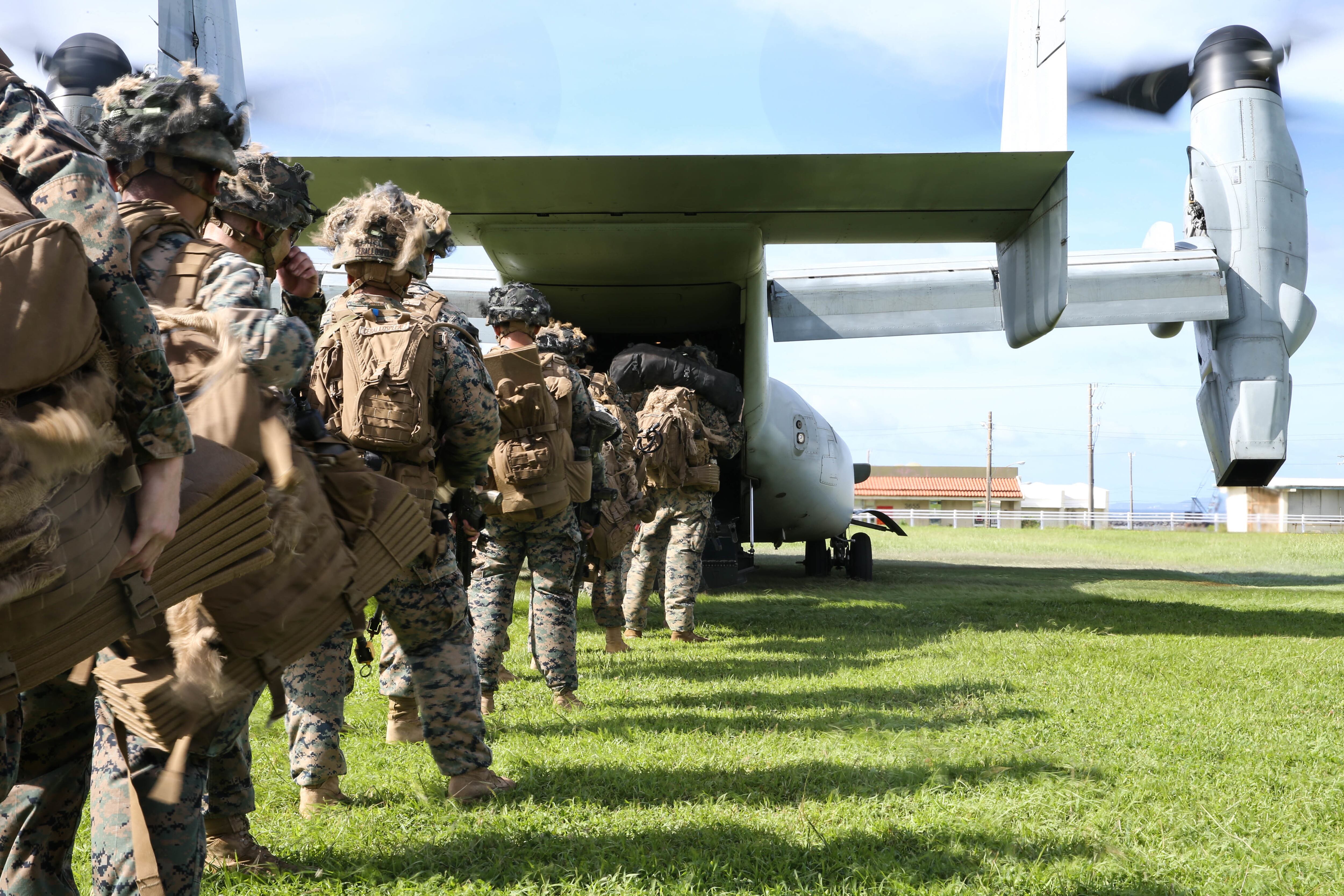This article has been updated to accurately reflect the participation of 2nd Battalion, 7th Marine Regiment in the Resolute Dragon Exercise.
Marines are in the midst of the largest exercise in recent years with the Japanese defense forces that will see the first-ever use of the Corps’ evolving warfighting concepts conducted in a field exercise with a foreign partner in the mix.
Exercise Resolute Dragon is the largest bi-lateral event between the Marine Corps and Japan in recent history, said Capt. Benjamin Yoder, 3rd Marine Division spokesman. An estimated 2,600 Marines and 1,400 Japanese soldiers are involved.
The event will include a long-range resupply from the Kadena Air Base on Okinawa, Japan to Combined Arms Training Center Camp Fuji, Japan. MV-22 Ospreys will transport simulated casualties in a mass casualty training event.
But the fireworks come after the insertion of High Mobility Artillery Rocket Systems on Tuesday. That’s because Japan Ground Defense Forces and Marines will share sensor and communication networks to conduct a maritime strike at two different locations between Dec. 13-16.
RELATED

During that same timeframe, Marines with Golf Company, 2nd Battalion, 7th Marine Regiment and the 5th Brigade of the Japanese Ground Self-Defense Force will run a bilateral air assault, to include Japanese soldiers hitting the objective from Marine aircraft.
In an interview on Sunday with Marine Corps Times, Maj. Benjamin Reading, fire support coordination officer for 4th Marine Regiment, laid out the unique nature of what his Marines are doing in the coming weeks.
And for the first time the Japanese Air Self-Defense Force will be refueling Marine aviation assets throughout the exercise in tactical situations.
This will also be the first time, at least in known, recent history, that the Marines have conducted a full “kill chain” fire from land to a target at sea with a partner force fully integrated, meaning a part of the target acquisition, communication, permissions and firing on the target.
“That’s the difference for this one, we are establishing the tactics, techniques and procedures on how we’re actually going to fight together,” Reading said.
Planning for this exercise can take up to a year, the major said.
He’s watching his team for how well they execute and what information he can bring back to continue to shorten and quicken the kill chain.
“How to do the coordination, establish the procedures bi-laterally,” Reading said. “We’re just building it together, those lessons learned will influence future exercises.”
The exercise works joint and ally forces in a coordinated mission while also working in the Marines’ still-forming Expeditionary Advanced Base Operations, or EABO concepts that leadership sees as the way forward for fighting, especially with the Navy in the Pacific.
The units involved hail mostly from 3rd Marine Division and include two infantry battalions, elements of 3rd Reconnaissance Battalion, 3rd BN, 12th Marine Regiment, to include a rocket battery, light attack helicopter, fighter jets, Ospreys, CH-53E Super Stallions, and a variety of logistics, medical and maintenance Marines.
The Air Force will bring MC-130s and CV-22s out of the 353rd Special Operations Wing while the Navy is bringing the Ralph Johnson, an Arleigh Burke-class destroyer and P-8 Poseidons from Patrol Squadron 47, elements of 5th Air Naval Gunfire Liaison Company and Military Sealift Command has contributed the Puerto Rico, an expeditionary fast transport ship.
And that’s just the U.S. side.
The Japanese military is contributing elements of the 9th Division, Northeastern Army, fighter jets and assault support aircraft and Type 88 Surface-to-Ship Missiles out of the 4th Surface-to-Ship Missile Regiment.
For just the maritime strike piece of the larger exercise, Reading said that on-the-ground viewers would see Marines and Japanese forces first trying to find the target, searching through vast distances and seemingly countless islands with sea, air, land and even space assets.
Once the target is acquired, all the people in various locations, from patrol aircraft to ships to Marines in the sand ready to fire their missile will look at where the target is, how fast it’s moving and then seek to put it in their aperture as they request permission to fire.
With the legally mandated thumbs up, the show begins.
“Then we see all the effects come to bear on that target,” Reading said. “Missiles off the destroyer, ships and aircraft coming in, everything on the United States and Japanese side.”
Todd South has written about crime, courts, government and the military for multiple publications since 2004 and was named a 2014 Pulitzer finalist for a co-written project on witness intimidation. Todd is a Marine veteran of the Iraq War.





